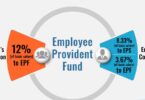
Refinancing involves replacing an existing loan with one with different terms, often to lower monthly payments or tap into home equity. Refinance loans have become popular ways for borrowers to lower monthly payments, reduce interest rates or gain access to home equity.
Refinancing depends on many variables, including your current financial status and property’s market value. That is why it is essential that you understand more of its basics before making the decision if refinancing is right for you.
Collateral
Collateral is an asset a borrower puts up as security against a loan, such as real estate, vehicles or financial assets like stocks and bonds.
When used in lending, collateral helps reduce credit risk and allow lenders to extend loans that would otherwise have been denied; additionally it may be used in debt collection proceedings, bankruptcy cases and legal battles. Understanding more about collateral will enable you to make smarter financial decisions.
Collateral is often pledged as security when taking out home or car loans, giving lenders ownership if borrowers cannot repay the full loan balance. Collateral may also be used as part of margin trading in brokerage accounts – traders must post cash or financial assets as collateral in order to open an account and trade securities on margin.
The value of collateral is usually established through professional appraisal. An appraiser will assess its condition while considering other aspects, such as income and the credit history of the borrower. Lenders then use this appraised value to determine how much they can lend.
Collateral is typically secured against mortgage, home equity line of credit or auto loans but may also be used as security against personal loans and other financial products.
One advantage of collateral loans is more favorable terms than an unsecured loan like credit cards; these favorable terms include lower interest rates, larger loan amounts and longer terms. They may especially prove useful to borrowers who lack established credit histories or suffer from inconsistent or spotty credit history.
Before applying for a collateral loan, it’s essential to shop around and compare rates. Most lenders provide quotes online that allow easy comparison and often require only soft credit checks that won’t damage your score.
When you find the ideal terms for your situation, take time to read over all details of the agreement carefully to make sure that monthly payments can be comfortably managed.
If you do not have collateral available to you or are uncomfortable with the risks associated with this type of lending, don’t fret! There are options available for you, too.
Refinancing a loan without collateral can be accomplished with many online lenders, though it’s essential to do your homework first and consider all potential costs, such as origination or prepayment penalties and fees associated with refinancing, before proceeding. You can click here for more information. You should ensure your new lender doesn’t charge interest on an existing loan and has better terms than what’s offered currently.
Refinancing loans offer one main advantage: getting a lower interest rate. If your credit has improved since taking out the original loan or market conditions have altered since, qualifying for a new one may mean qualifying for lower rates – potentially saving thousands over its lifespan!
Refinancing loans is also a great way to accelerate debt payoff. If you can afford higher monthly payments, refinancing with shorter repayment terms could enable you to reach debt clearance quicker.
Refinancing loans can be an excellent way to consolidate multiple debts, but you should take your time when selecting the ideal option.
Research all terms and conditions of various loans before making any decisions, and consult a financial planner or accountant as necessary before taking action. Be wary of predatory lenders who use deceit or coercion to impose abusive terms onto borrowers through high interest rates or fees exceeding five percent of loan value as warning signals.

Interest Rates
Refinancing involves the reassessment of an individual or business’s credit terms and financial position. Popular consumer loans considered for refinancing include mortgage, car and student debt.
Refinancing loans is generally undertaken to improve borrowing conditions by either reducing the interest rate or changing its terms. Influences that determine interest rates include national monetary policy, economic trends and market competition.
Financial institutions sometimes allow borrowers to “buy down” their interest rate by paying points at closing; however, it’s essential that borrowers consider whether the length of time their loan will remain outstanding will offset these fees.
Also keep in mind that while interest and APR may appear similar, APR also covers various charges outside just interest.

What is APR?
As you shop for a credit card or loan, many terms may prove dauntingly complex. Of particular note is APR (Annual Percentage Rate), which establishes how much borrowing money will cost; in essence it shows what its true cost will be including any applicable fees.
APR (Annual Percentage Rate) is determined yearly and can vary depending on what financial product you’re using; credit cards have different APR than mortgages do, for instance. Furthermore, it’s essential to understand simple vs. compound interest as it will have an effect on both forms of APR calculation.
Understanding APR will enable you to make smarter borrowing decisions. For instance, when looking at taking out a refinance loan to pay off debt, it is crucial that you compare apples-to-apples by looking at each program’s APR – this way, you will ensure you’re receiving the best possible offer.
The APR for any financial product varies based on its type and usage; for instance, credit cards will have different APRs than mortgages due to lower lender risk associated with them; similarly, those with poorer credit will pay higher APRs than those with excellent ones.
There are various APRs, from purchase APR charged on new purchases to cash advance APR charged when using your card at ATMs or banks, plus introductory APR offered by some card issuers for purchases within a limited time. Furthermore, penalty APR may also apply when payments are missed or when you go over your credit limit.
The Truth in Lending Act’s aim is to enable consumers to easily compare loans and credit card offers from lenders. By requiring disclosure of APR by lenders, consumers will be better able to understand what borrowing actually costs them and make informed financial decisions.
APRs can be confusing because they encompass not only interest rates but also charges and fees that accrue during the life of a loan or credit card agreement. Therefore, it is vital that when shopping for new loans or credit cards you read all of the fine print carefully to avoid unexpected rate hikes when markets become volatile.
Be mindful of consumer protection features available with variable rate products as these could help protect you against sudden increases when markets fluctuate dramatically.
Fees
Most lenders charge a fee to pull your credit report as part of the mortgage refinancing process, helping lenders assess your ability to repay debt and may help determine your interest rate. Refinancing usually has less of an effect on your score than applying for new credit as hard inquiries tend to have less of an effect.
Some loans require you to pay points upon closing which may or may not be refundable depending on type of loan and lender used; cash-out refinancing offers attractive opportunities for homeowners seeking debt consolidation, large expenses coverage or home improvements; however if either cannot pay your mortgage payments or property values decline substantially you risk losing ownership and may even risk losing home ownership altogether if repayment fails or property values drop below expected levels.
Requirements
Refinancing requires going through the same loan approval process you underwent when getting your initial mortgage loan. Your lender will assess factors like your credit, income and equity in the property to decide if you qualify for more favorable loan terms; generally speaking a clean credit history and solid asset base is required; if either has diminished since getting your original mortgage loan they could even deny you.
If your application for refinancing was denied, be sure to understand why and take steps toward rectifying any problems identified during that process. Staying current on payments across accounts and paying down debt while avoiding new credit or hard inquiries will increase your chances of regaining eligibility.







Leave a Comment
You must be logged in to post a comment.